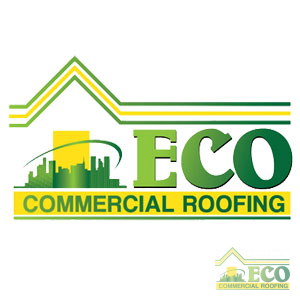
The Aftermath of a Storm
With hurricane season upon us, you know what the possibilities are of having to deal with wind-damaged roofing. So, what is wind damage? In general, wind damage happens when the winds from any type of storm cause damage to anything that is in the path. From tree limbs, tree branches, and trees to shingles on a roof or an entire roof being blown off.
Strong “hard” winds can pick things up and toss them through the air. This can be lawn furniture and décor, bikes and toys, barbeque grills, and cars. Windows get broken and even cows have been seen flying in tornado-level winds – that isn’t just made for tv drama. A wind-damaged roof is only one thing that you may experience with heavy winds.
What causes roof damage?
It is just a matter of time before a roof is damaged, and when your home has wind-damaged roofing, it is important to get the repairs done quickly. By being on top of the repairs, you’ll avoid having more damage occurring.
When it comes to the weather, wind damage roof isn’t the only damage you may experience. Depending on where you live and the season, you can have a roof damaged by any of the following:
- High winds
- Thunderstorms
- Hailstorms
- High heat
- Deep cold
- Hurricanes
- Tornados
Any of these elements of weather can cause roof damage, and many of those elements include wind damage. Roof damage can leave your roof vulnerable to more damage, like moisture. Once moisture gets under the shingles or other roofing material, it is only time before that moisture does damage to the roof decking and more.
Moisture in the winter especially does damage. After moisture gets under the shingles, it freezes and expand, causing even more damage. A hailstorm will beat your roof, leaving broken shingles, cracked shingles, and holes, all allowing that moisture to get under the shingles.
The broken and cracked shingles also allow wind to get under the shingles. Once the wind has gotten under a shingle, it can loosen it and lift it off, pulling through the nail, even pulling the nail up with the shingle.
What are dangerous wind speeds?
Are 45 mph winds damaging? Yes, wind damage can happen at 45mph winds, and you may even experience wind-damaged roofing. Take a look at what damage different speed level winds can do:
- 45 mph to 57 mph: Winds at 45 mph are considered non-severe, but slight damage can happen according to the National Weather Service. What they see as non-severe wind damage can break off tree branches and any roofing that has aged, loose shingles are susceptible to creating wind damage roofing.
- 58 mph to 74 mph: At these speeds, the wind is considered severe and can cause significant damage to your landscaping and structures, including your home. Winds at these speeds can break tree limbs and uproot trees. Wind-damaged roofing becomes more severe with ripped-off shingles, even in good condition. Chimneys are often damaged by winds at these speeds too.
- 75 mph and up: Winds at this speed and higher can cause widespread damage to homes and trees, including flipping cars and mobile homes. At this strength, a wind-damaged roof is significant.
How do you know if you have roof damage?
If you don’t know what roof damage signs to look for, note that it leaves your home vulnerable to severe damage, starting with mildew and mold, water rot, and wildlife infestations. This can create thousands of dollars in repairs and replacements. To avoid that from happening, here are the warning signs to look for with hail, ice, rain, or wind-damaged roofs:
- Water Damage: If you’ve noticed water stains on the ceiling or walls, a dingy brown stain, or you see mildew or mold on the rafters in the attic, or along the exterior of the roof, you likely have some roof damage. Have this inspected by a professional roofer. If they confirm you have a wind damage roof or any type of roof damage, call your insurance company.
- Shingles: If you notice you have missing shingles or other roofing material, this is exposing your roof to the elements and is susceptible to more weather, wildlife, and wind damage roofing.
- Fascia and Soffits: Any cracking, decaying, deterioration or missing fascia and soffits is an indication of possible water and wind damage roofing.
- The Gutters: Some asphalt granules in the gutter runs are normal, but a large amount can be from an aging roof, hail, excessive heat, heavy rains, or wind-damaged roofing.
- The Vents: If your asphalt shines are curling along the edges, this is an indication of poor venting. Poor venting allows moisture to collect in the attic, then you have ice dams forming. This all puts your roof in a vulnerable state for wind damage. Roofs need to breathe, without proper and adequate venting, this isn’t possible.
What does wind damage look like on shingles?
The most obvious sign would be missing shingles. Other indications of a wind-damaged roof would be horizontal thin lines across the shingles where granules have worn off, usually one to two inches below the shingle above. This is typically an indication that the seal has broken, allowing the shingle to flap around in the wind and rub against the shingle above.
Is wind damage to a roof covered by insurance?
Yes, in most cases. Any wind damage roof and the contents or other structure listed on the policy will be covered. When the insurance adjuster may decline the claim is if the roof is old and worn beyond its prime. At this point, they will list it as owner negligence, meaning you should’ve had the roof replaced already and the wind damage wouldn’t have happened.
In Conclusion – Just What Causes High Wind Gusts?
We probably all studied this in 8th-grade science, but most of us didn’t absorb it (well, I didn’t!). A sudden burst of wind is created with friction between atmospheric pressure and air warming. While the gusts are usually short-lived and come up suddenly, it is a build of gradual wind but as it brushes past buildings, trees, and other obstacles, the friction slows it down and picks up speed again.
A chaotic change in the atmospheric pressure can create large-scale variations in the speed of the wind, referred to as wind shear. The wind gusts are generated, and as the sun rises and warms up, it creates cooler wind gusts. The higher the wind speed, the more gust there will be in the wind. If you’ve found yourself with wind-damaged roofing, you can reach out to our team at 877-406-7663 to get the help you need with repairs.





